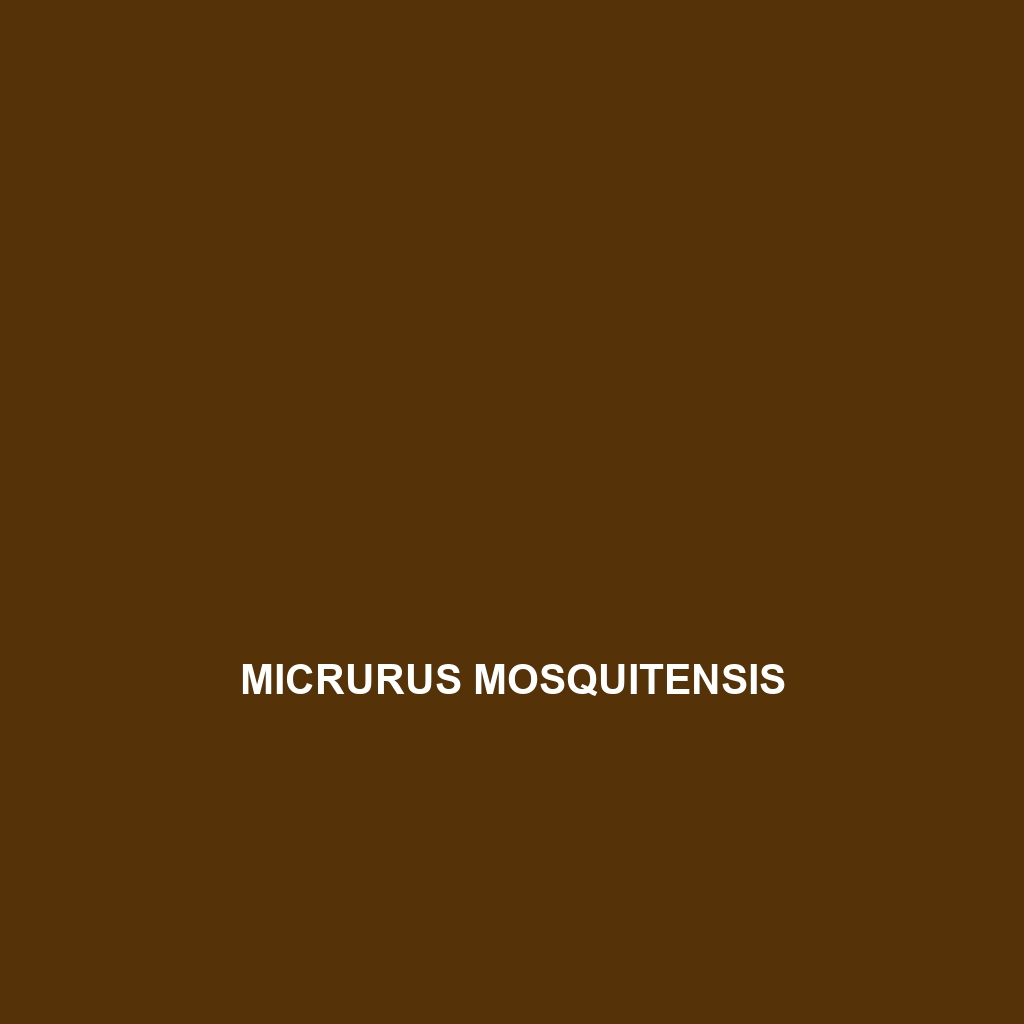Common Name
Micrurus mosquitensis
Scientific Name
Micrurus mosquitensis
Habitat
Micrurus mosquitensis, commonly known as the mosquito coral snake, is primarily found in the tropical regions of Central and South America. This species thrives in environments characterized by abundant vegetation, such as rainforests and savannas, which provide ample cover and hunting grounds. The warm, humid climate of these areas offers favorable conditions for their survival, while they are also occasionally spotted in temperate forests where water sources are present. These habitats not only support the species but also maintain a rich biodiversity, integral to the ecological balance of the regions they inhabit.
Physical Characteristics
Micrurus mosquitensis exhibits striking physical characteristics that set it apart from other snake species. Typically, this snake reaches an average length of 60-80 centimeters (24-31 inches). The most distinctive feature is its bright coloration, characterized by bold bands of black and yellow or white, which serve as a warning to potential predators. Its slender, elongated body shape helps it navigate through dense vegetation effortlessly. Additionally, the head is slightly wider than the neck, a typical trait in many venomous snake species. This species’ unique appearance and coloring play a crucial role in its survival, both in hunting prey and avoiding dangers in its environment.
Behavior
The typical behaviors observed in Micrurus mosquitensis include a preference for both diurnal and nocturnal activities, though they are primarily more active during the cooler hours of the evening. This snake is known for its secretive nature and often hides under leaf litter or within vegetation, which helps it camouflage against predators. Social interactions are minimal, with mating rituals occurring once a year, generally in the spring. During these rituals, males may engage in combat for female attention, showcasing their physical prowess. Their elusive habits make them a fascinating subject for herpetologists and wildlife enthusiasts alike.
Diet
You may find that Micrurus mosquitensis predominantly exhibits a carnivorous diet, feeding mainly on small reptiles, amphibians, and occasionally small mammals. Their hunting technique involves ambushing their prey, utilizing their potent venom to immobilize it quickly. The primary food sources include lizards and frogs, making them effective insectivores within their habitats. This predatory behavior plays a critical role in controlling the population of their prey species, supporting the ecological balance in their environment.
Reproduction
The reproductive cycle of Micrurus mosquitensis typically occurs during the warmer months, with mating generally taking place in spring. After a gestation period that lasts approximately three to four months, the female gives birth to live young, usually between 4 to 10 offspring per litter. Neonates emerge with a striking resemblance to adults, displaying the same bold coloration that is characteristic of the species, thereby avoiding predation. Parental care in this species is minimal, as the young are self-sufficient shortly after birth, a common trait among many snake species.
Conservation Status
The conservation status of Micrurus mosquitensis remains largely under-researched, but it is currently classified as ‘Least Concern’ on the IUCN Red List. However, habitat destruction through deforestation and agricultural expansion poses significant threats to its population and natural habitat. Efforts to conserve biodiversity within tropical areas are critical, as they aid in preserving this species and many others that share their habitat. Awareness and conservation programs are essential to mitigate risks to their populations, as awareness can lead to protective measures being implemented by local governments and organizations.
Interesting Facts
One remarkable fact about Micrurus mosquitensis is its unique method of locomotion; unlike many snakes that employ a slithering movement, this species can also engage in a sideways motion that allows it to traverse through dense vegetation with great agility. Additionally, its venom contains a mix of neurotoxins that can be lethal to small prey but generally poses little threat to humans unless provoked. Understanding these unique adaptations adds depth to our knowledge of this captivating species.
Role in Ecosystem
Micrurus mosquitensis plays a vital role in its ecosystem as both a predator and a potential prey species within its food web. By controlling the population of small reptiles and amphibians, it contributes to the ecological balance in its environment. Additionally, its presence is indicative of a healthy ecosystem, as it is often a keystone species that helps maintain the biodiversity of its habitat. The interactions between this snake and other wildlife illustrate the interconnected nature of rainforest ecosystems, showcasing its importance in maintaining ecological stability.
